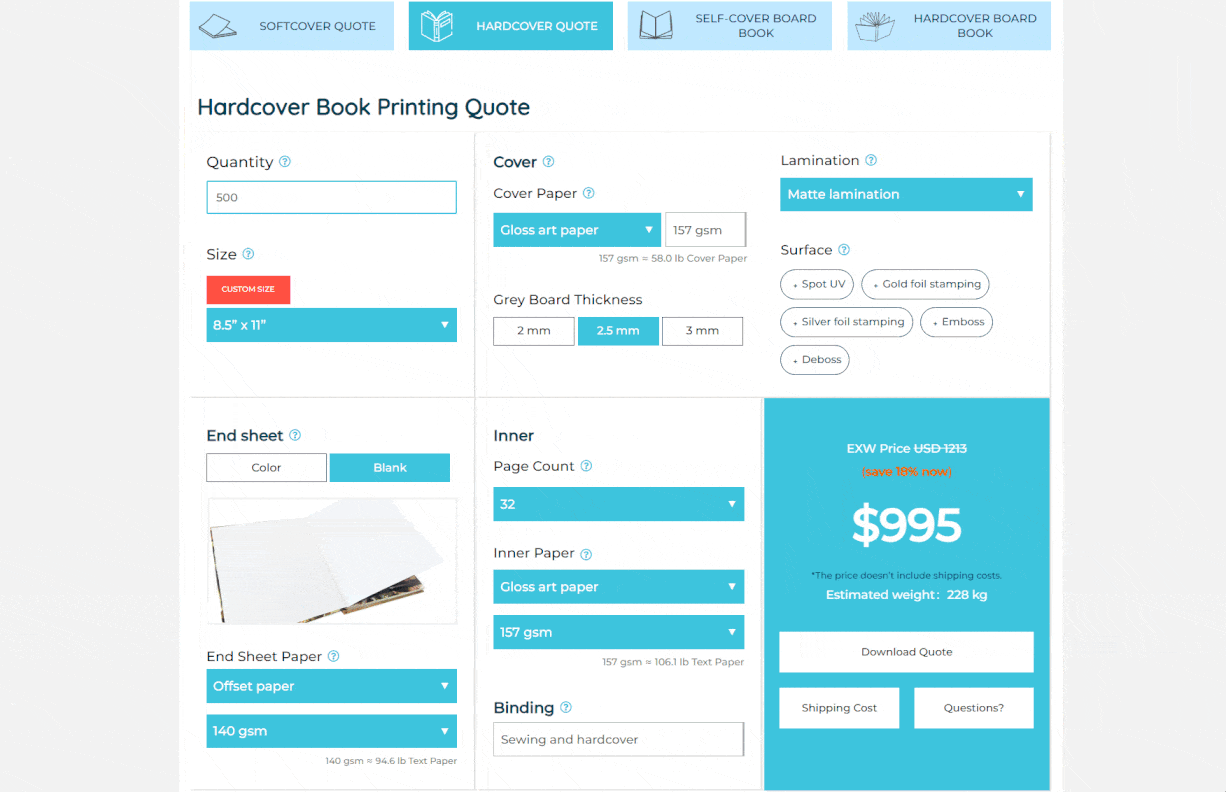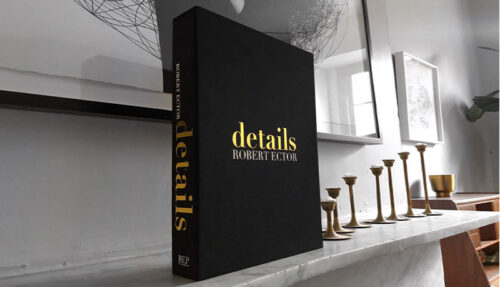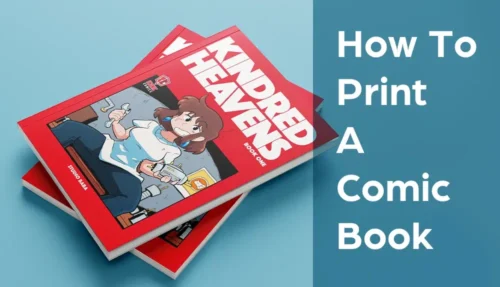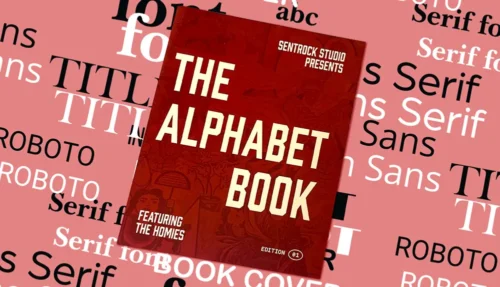A complete guide to the costs of self-publishing a book
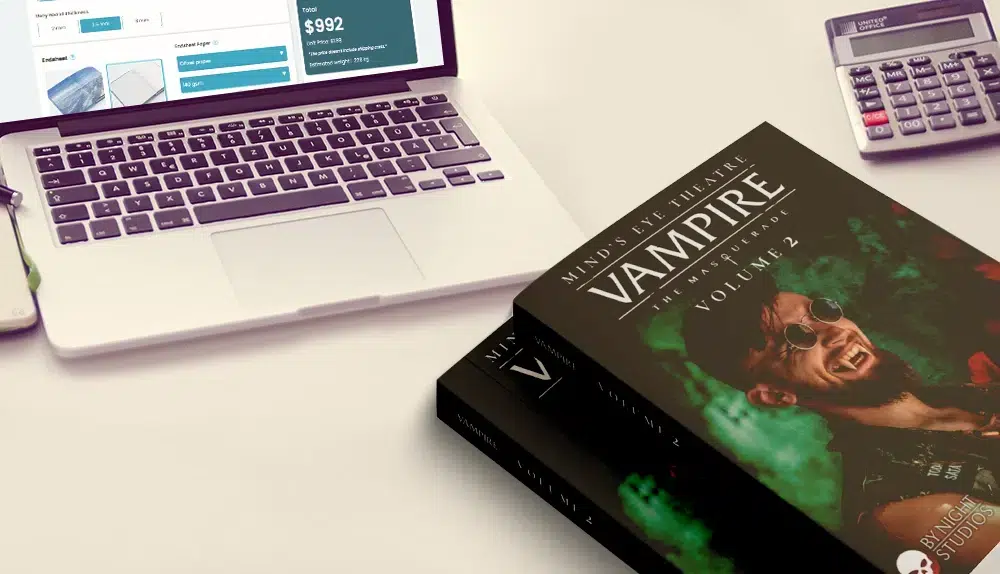
Thinking of self-publishing your book but worried about the potential costs involved? You’re in good company! Self-publishing has transformed from a backup option into a powerful path chosen by bestselling authors and passionate newcomers alike. But what exactly does it cost to self-publish professionally—and how can you avoid costly mistakes?
Self-publishing used to be thought of as the last resort of authors who couldn’t get a deal with a mainstream publishing house. Over the last 15 years, that situation has undergone a radical change. Self-publishing is now the first-choice option for thousands of successful writers the world over. Even authors with literary agents and traditional publishing contracts choose to self-publish some of their work and are then known as ‘hybrid authors’.
All kinds of people of all ages and from all walks of life elect to publish their own books. They range from the teenager keen to share their ‘fan fiction’ with like-minded online communities, through entrepreneurial genre fiction writers with huge fan bases, to enthusiasts of every stripe motivated to provide useful information for others with the same passion, to academics and poets, to international business coaches who find that a book helps position them as an authority in their field. And that’s just a few examples.
If — for whatever reason — you’ve written a book and you’re thinking of self-publishing, you’ll be wondering how much it costs. After all, there’s a lot of conflicting information out there, hundreds of options and services, and it can all get quite confusing. We’ve been working with self-publishing authors for decades, so we flatter ourselves that we know a thing or two about it! While our remit is printing — and you can’t publish a book you haven’t printed, unless you’re only publishing eBooks — we understand the business end-to-end. It’s the only way we can offer a first-class service to our clients. In this clear, concise guide, we’ll break down the expenses step-by-step, helping you budget wisely and publish successfully.
At-a-glance
| Cost Element | Typical Cost Range | Notes |
|---|---|---|
| Editing and Proofreading | $300 - $10,000+ | Depends on complexity, editor's experience |
| Book Design (Cover & Interior) | $700 - $5,000+ | Complexity and designer reputation matter |
| Printing | Varies widely; POD or custom offset | Custom offset often cheaper for large runs |
| Distribution & Marketing | $500 - $10,000+ | Includes online platforms, ads, websites |
| ISBN and Barcode | $125 - $295 | Essential for retail and library distribution |
| Author Website & Promotion | $500 - $5,000+ | Cost depends on complexity and features |
| Total Initial Investment | $1,000 - $30,000+ | Wide range based on your goals and budget |
So, how much does it cost to self-publish a book?
How long is the proverbial piece of string? The costs of self-publishing can vary widely. Much depends on what you’re writing, why you’re publishing, for whom, the format in which you want to print your book, and the means of distribution. So, let’s take a closer look at the factors that might influence your self-publishing choices — and so the costs involved.
While it’s likely that you want to sell your book and make money from it, financial gain isn’t the only reason people print and publish their own books. For example, you may have written your family history or a childhood memoir that you leave as a legacy for your nearest and dearest, or perhaps you’ve written the definitive guide to your hobby for the sheer love of sharing your passion with others of like-minded interest, or you may self-publish a book as a form of indirect marketing to bring traffic to your website or blog.
On the other hand, you may want to make a full-time living writing and selling novels. Fantasy, science fiction, mysteries, crimes stories, thrillers, and romance are all popular choices. You may be a specialist in your field and realize there’s money to be made by sharing your knowledge and experience more widely through a series of instructional manuals, guides, or “how-to” books. Information technology, cookery, and self-help are bestselling genres in this field.
But whatever your reasons for self-publishing, if you want to make a professional-looking job of it, the processes are all more-or-less the same, and they all have costs attached. To publish almost any kind of book, you’ll need to go through the following stages once you’ve finished writing it:
- Editing and proofreading
- Designing and formatting or typesetting
- Printing
- Distribution, marketing, and sales
In most cases, you’ll need to pay a third-party professional to at least help you with— if not completely handle — each of these stages. Sure, it’s possible to bash out a Word document and upload it to Amazon KDP (Kindle Direct Publishing) for auto-conversion into an eBook, tack on a ready-made cover template with a copyright free image downloaded from a website like Unsplash, Pixabay, or Pexels, and press ‘publish’. But honestly, if you do that, don’t expect anyone to buy or read your book. With the maturity of the self-publishing industry have come greater refinement and higher expectations. So, if you want to self-publish successfully, you’ll need to do a professional job.
Editing and proofreading
There are several rounds of editing for most books, especially fiction. Each requires a specialist editor and carries its own price tag. Let’s break them down:
- Structural editing — this is looking at ‘the big picture’ on a chapter-by-chapter basis. Is the argument or story logical and cohesive? Does it make sense to the reader? Is everything that needs to be explained, explained? Is there anything missing that should be added? Is there something unnecessary which needs to be cut? Is everything in the right order?
- Developmental editing — this is sometimes combined within the structural edit, but often taken as a separate process. It’s also a ‘big picture’ view, but focuses more on character arcs and plot development in a novel, say, and completeness of the argument or thesis in a non-fiction work. Unlike a structural edit, a developmental edit will also critique style, tone, and vocabulary.
- Copy editing — at this level, the editor goes through your manuscript line by line, paying close attention to each sentence. They’ll point out ways to improve your sentence structure, paragraphing, choice of language, and overall writing style. They may also point out any cliches which have crept in or ways to improve your use of imagery and metaphor to better express meaning and create emotional impact.
- Proofreading — proofreading is the final, most granular editorial step. It’s about looking at each word and sentence to make sure there are no spelling or grammar errors, typographical mistakes, or missing or repeated words. After a professional proofread, your manuscript should be error-free and ready to be prepared for publishing.
You might hire an individual expert editor for each of these phases, have the same editor do them all, or opt to handle one or two of the stages yourself if you have the relevant experience and skills. The cost depends on the experience of the editor — who could be anyone from a university student working for a few bucks on the side that you picked up on Fivver to a fully qualified professional with experience working in mainstream publishing— and the depth of service they give. But as a benchmark figure, you should expect to spend anything from as little as $300 for a short, general ‘all-in’ edit to as much as $10,000 or more for a full, professional editing process equal to anything the ‘Big Five’ publishing houses provide for their top-level authors.
Design and formatting or typesetting
Once you’ve written, edited, and proofread your text, you’ll have a document ready to be turned into a book. The next step is design. You’ll need the interior laid out, split into chapters with headings, pagination, maybe flourishes like decorative dividers and drop capitals, the front and back matter, the cover and jacket. Design is often a ‘back-and-forth’ process as you collaborate with your designer to realize your vision for how the book should look and feel.
During this process you may also need to make a few compromises based on what’s really achievable within your budget but you should also expect some happy surprises as your experienced and knowledgeable designer makes suggestions of which you couldn’t have thought. Let’s dive a little deeper into what’s involved in choosing and working with a designer.
Creating a design brief for your self-published book
Whether talking in person with your designer, filling out their own ready-made questionnaire or sending them a document and ‘roughs’ you’ve devised yourself, you’ll need to give your designer some kind of design brief so that they know what you’re aiming to achieve. The best designers will let you know from the outset what information they need. The clearer and more detailed your design brief can be, the faster and more accurately will your designer be able to do their job. While it’s important to have a good idea of what you want, it’s always worth remembering that a designer isn’t just a drafts-person, but a creative in their own right, so give them a bit of space to exercise that creativity if you want to get the best results.
Design is an iterative process
Your design will likely go through several iterations before you agree a final layout. Top designers will give you several initial ‘roughs’ from which to choose and only move on to the more detailed artwork as you agree that you’re happy with what they’ve done so far. But even at the last minute you may want to request small changes.
Expect, then, a certain amount of back-and-forth as your design goes through several rounds of revision. Just remember that the more revisions and changes you go through the more it might cost. So, shop around for a good designer and see if they offer packages, hourly rates, or flat fees with a fixed number of revisions included. The last option is often the best way forward.
Likewise, the best printers — we’re smiling and saying hello, here! — don’t just slap ink on paper but understand the whole process top to bottom and have their own in-house designers. Our designers have long experience both wide and deep and, because they also understand our printing processes inside out, can usually work more quickly to arrive at an excellent design to meet your needs. And if we’ve got all the files print-ready in-house, obviously we can move on to getting your book printed that much quicker, too.
Text, images, flourishes: design complexity vs time and cost
Clearly, the more complex your design requirements, the more it will cost to create the artwork, finalize the layout, and finally print the book. With a basic novel, the costs may be less — an attractive cover design built on a standard template with a single stock-based image and an interior with clear, simple text and no flourishes — compared to a detailed text book with multiple interior layouts, summary boxes, colored text, full color photos, complex diagrams, indexing, marginalia, and notes.
So how much you can expect to pay for your design — cover and interior — depends entirely on the following factors:
- The reputation and experience of the designer
- Whether it’s a paperback or hardcover book
- The complexity of the layout and interior design elements
- The number of pages
- The number of roughs and revisions you go through
Still, as an approximate benchmark, you should expect to pay anything from $700 up to $5,000 or more to get the job done well. Of course, you could do it yourself with downloadable desktop software, but seriously, if you haven’t got at least a degree in design, a working knowledge of current printing technology, and plenty of unpaid time on your hands, that’s likely not going to get you the results you need. Same goes for a kid you might hire on Fivver or Craigslist. If you’ve gone through all the work of writing a book — and we understand how much work is involved in that — it makes sense to invest in professional design.
Costs of eBook only self-publishing
It’s common for first time self-publishers — especially ‘authorpreneurs’ who aim to cash in on the fashion for avid readers of genre fiction to plow through several eBooks a month reading exclusively electronic copy on their e-readers — to think of saving a bundle on design and printing costs by publishing only in electronic formats, sometimes exclusively with Amazon’s KDP program. There’s nothing intrinsically wrong with this choice and several authors have found success that way. But you mustn’t imagine that it’s as easy or cost-free as some might suggest.
To publish an eBook that’s going to have a cat in hell’s chance in today’s ever more competitive marketplace, just uploading a Word document and slapping on a cover based on KDP’s ready-made templates just ain’t gonna cut the mustard. One way or another, you’ll need to invest some to give your book any chance of visibility or getting read, let alone building up a fan base and the necessary body of positive reviews. So, let’s take a look at the minimum requirements for publishing a professional-looking eBook today:
- Professional cover design
- Professional interior formatting
- Distribution, marketing, and promotion
eBook cover design
With eBook cover design, you’ll still need to engage a professional designer if you want a decent job done. You’ll have two options for the cover. You can either use stock images which the designer can then manipulate and enhance, and overlay the image with standard font lettering for the title, your name or pen name, and so on. Or you can have an original image — either photographic or an illustration — created from scratch and use specialist, paid-for fonts for the text. For this service, expect to pay anything from $300 at the lower end up to $1,500 and much more at the higher end.
Interior formatting and layout for an eBook
There are desktop applications for designing or converting files as eBooks in a number of formats, such as .mobi (for Amazon) and .ePub (for just about everywhere else). So, one option is certainly to buy the software and put in the time and effort to master it. Then you should be able to manage your interior layout yourself. You could say that this option is ‘free’ but that’s a bit misleading. Aside from the cost of the application, there’s all the time and effort spent learning how to use it, and then the time you put in to doing each book. That’s all time that you could be writing — and so potentially earning more money than you’d be paying a professional.
In any case, as you’ll have guessed by now, the costs of layout and formatting a professional-looking eBook span a range. You can expect to pay ‘almost nothing’ if you do it yourself, up to about $300 at the top end. So, eBook formatting is definitely cheaper than layout design and typesetting for print. But, you may need to create a paperback version of your book anyway if you want to sell the eBook. We’ll explain why in just a minute.
Distribution, marketing, and promotion of an eBook
Writing, designing, and printing a book is only part of the story. To truly publish it, you need to think about distribution, marketing, and promotion, too. We’ll go into all this in more detail later, but for now all you need to know is that eBook distribution is relatively straightforward once you have the formatted files.
You can just go ahead and upload them to any or all of the relevant digital distribution services such as KDP, Draft2Digital, Smashwords, Barnes&Noble, IngramSpark, and others. Several charge a small fee for this, others, such as KDP, are free. But remember when you’re pricing your book, that they will all charge you a percentage royalty commission on sales, which can be anything from 30% to 65% depending on the service.
You must remember that none of these services will promote and market your book for you. That’s a job that, as a self-publishing author, you’ll either need to handle yourself or outsource to a book marketing company. Third-party book marketing options can cost anything from a few hundred dollars for a mail out to a list up to tens of thousands for a full year’s marketing and promotion including advertisements, social media exposure, book blog tours, and reviews. If you intend to do it all yourself, as a minimum you’ll need:
- An author website with a lively, regularly updated blog
- An active — and interactive — presence on the main social media
- An email list and frequent newsletter
- A paperback and probably audio edition of your book
While the reason for the first three of these should be obvious, you may wonder why — having opted for eBook only publishing — you suddenly find that you need a paperback and audio book edition, too. We’ll explain. If you check out the bestselling eBooks in any category on Amazon, say, you’ll see that they’re all available in several formats. There’re reasons for that and they’re to do with marketing.
- When you have a print book it’ll be displayed with your eBook. Your print book, naturally, will have a higher price tag (say, $15) compared to your eBook (say, $3.99). Immediately, a customer interested in your book sees that by getting the electronic version, they can save themselves eleven bucks! So they buy your eBook. Same ‘psychological trick’ goes for the audio version.
- Just having a printed book available lends authority to your status as an author. That can make all the difference between making a sale of your eBook and not doing so. Maybe that’s not the way it should be, but that’s the way the market works. Without a print edition, you’ll make fewer eBook sales. It’s just a fact of publishing life.
- Most authors find that to promote their book, sooner or later they’ll need to visit universities, schools, libraries, literary and genre festivals, conventions, and other events either as speakers, panelists, judges, or just to lay out a stall. If you only have electronic editions of your books, it’s hard to make any kind of impression at these events. Again, when it comes to marketing and promotion, a print book is always a great advantage.
So, if you add all this up — cover design, interior formatting, distribution, author website (including development, hosting, domain name, theme, and so on), an email list and a newsletter, social media advertising, and other promotion — it’s not free after all to publish eBook only.
Even if you do minimal marketing, don’t have a website or email list to promote your work, and go ‘all-in’ with Amazon’s KDP exclusivity deal without a paperback, you’ll spend between $300 and $500.
If you mean to build a career as an author, then you’re looking at a minimum capital outlay of $1,000 to $3,000 up to about $10,000 and more for your first year in business. Given the reality of the figures, and the difference a paperback edition makes to your marketing success, it rarely makes business sense to go ‘eBook only’.
Printing your self-published book: POD or custom printing services?
POD (print-on-demand) is popular among self-publishers — especially those just starting out without profits to reinvest or a dedicated fan base and responsive email list — because it’s relatively inexpensive and easy to manage. However, these apparent savings can be deceptive and more experienced and successful self-publishers tend to upgrade to custom printing services sooner or later. So, let’s take a look at the pros and cons of each.
Print-on-demand services
The pros:
- If all you want is a handful of copies to give to friends, or you’re a newbie and don’t feel confident about your sales, getting the books printed one at a time as they’re ordered is a reasonable option.
- The POD service means that you’re not responsible for distributing your books, so you don’t need to store them or package and mail them out to customers.
- The biggest POD services have global distribution networks, so you can sell your books all over the world. Of course, if your book is in English, it’s not going to sell many copies outside of English-speaking territories, but you could find a market in Australia, Germany, Holland, Great Britain and a few other places beyond the US.
The cons:
- You’ll pay a lot more for each copy of your book than you would with a traditional printer. POD services need to cover the higher costs of printing books individually and add their profits on top. Expect to pay between 20% and 65% of your book’s sale price for the convenience. If you can be reasonably sure that you’ll sell one thousand or more books, traditional printing will be cheaper every time.
- POD book printing technology is improving, but it still gives a noticeably inferior product. Paper quality, binding techniques (usually just gluing the pages together) and the ink, often give your book away as a POD product.
- If you have a project that needs a hardcover and beautifully reproduced photographs or illustrations, forget about POD. While a couple services are beginning to experiment with hardcover books (Amazon has something in beta right now) the costs are outrageous for the product you get.
- As a newbie, you may not mind about distributing to physical bookstores. But if you’re a seasoned pro looking to up your game, then a custom printed book will be indistinguishable from a traditionally published volume and have a much better chance of getting into stores and garnering mainstream reviews.
- POD services can’t handle specialist needs like a board book, pop-up, landscape, or outsized project.
Custom printing services
The pros:
- Custom offset printing services give you access to the full gamut of choices when it comes to paper, dimensions, layouts, binding options, finishes, flourishes, and more.
- Your book will be made by experts and you’ll get a truly high-quality, professional product.
- To help you market your book, a custom printer can also include publicity material such as flyers, posters, postcards, business cards, placeholders, adhesives, and more, all coordinated and branded for you.
- No matter how many copies of your book you print with a POD service, the cost remains the same and it’s always more expensive than a custom printed book. With traditional offset printing, each book gets cheaper the more copies you order in a run.
- No matter how specialized your project — a large scale photo essay, for example, or a pop-up children’s board book with flaps and sliders — a custom printer has your back. A POD service can only shrug and apologize.
The cons:
- You’ll still be responsible for marketing and distribution of your book.
- To make custom printing cost effective, you’ll need to order a minimum amount of books which may be anything from 500 to 1,000 copies at a time.
- If you notice errors in your copy after printing, the only way to correct them is by revising the files and ordering a new print run.
It’s not just a case of totting up generalized pros and cons, though. The choice you make about how to print your self-published book depends on several other factors. You need to calculate your printing budget, think about your sales strategy, storage and delivery options, and crucially, if you already have an established readership or if you’re ‘starting from scratch’ with no idea if anyone will be interested in your work.
Why custom offset printing may be your best self-publishing option
Let’s look beyond the generalized pros and cons of traditional printing. The usual objections raised to this option most often come from people sold on the POD route based on rumors and misinformation. For example, they’ll say it’s more expensive to go for a traditional print run — which is just not true — or they ask, “Where will you store 1,000 copies of your book?” But up-to-speed modern printers like ourselves offer storage, too, and we’ll send your books to you as and when you need them. Let’s take an honest look at the real benefits of going with a traditional custom printer for your self-publishing project.
Complete creative control
With all respect to the POD services, the best you’ll ever get out of them is a ‘throwaway’ paperback made of low-grade materials, cheap inks, and with a cover that’s likely to curl. You have no choice over the materials from which your book is made. With a custom printer, you have complete freedom to decide on everything from the grade, weight, and color of paper to the type of inks, the covers and binding, and more besides. You can — still paying less-per-unit — get a superb, high-quality product to match anything you’ll find in a regular bookstore, because we print those books, too!
Eco-friendly book printing
Many custom offset printers — such as ourselves — are very conscious of our responsibility to develop our industry in a sustainable way that respects the life of the planet and of future generations. For that reason, we — and a few others — use paper stock that’s either recycled or sourced from FSC-certified sustainable forestry. Not only that, but we use environmentally-friendly inks based on harmless, biodegradable vegetable products rather than toxic resins and solvents. Getting your book printed in batches — rather than one at a time — is also significantly more energy efficient, saving both water and electricity.
Make savings on design and interior layout
POD services don’t offer you any support with design. So, you’ll either need to do it all yourself or spend significant sums on a third-party professional designer. A custom offset printer may — as we do here at QinPrinting — have a team of in-house book designers. Going for a complete ‘design & print’ package is much more cost-effective.
So, how much does it cost to print a book with a custom offset printer? Let’s look at detailed pricing for all the options, including format, size, paper options, cover, and the number of books in the run.
Book pricing
You can check our online quote calculator to get custom book printing prices immediately if you already have a technical specification. But if you’re not sure, or you’re not familiar with book specifications, have a look at the specifications and tables below. All prices account for full-color printing and the currency is US dollars.
Book Printing Price Charts
Paperback book printing prices chart
- Book size: 8.5″ x 11″ or 8.5″ x 8.5″
- Printing: full color printing
- Book cover: 250 gsm art paper with gloss or matte lamination
- Book interior: 157 gsm art paper
- Binding: Sewn and perfect binding
| Quantity | 100pcs | 200pcs | 500pcs | 800pcs | 1000pcs | 2000pcs | 3000pcs | 5000pcs |
|---|---|---|---|---|---|---|---|---|
| 40pp+4pp | $429 | $552 | $682 | $815 | $868 | $1,287 | $1,771 | $2,850 |
| 48pp+4pp | $477 | $615 | $762 | $903 | $971 | $1,461 | $2,035 | $3,238 |
| 56pp+4pp | $543 | $700 | $869 | $1,043 | $1,126 | $1,680 | $2,338 | $3,748 |
| 64pp+4pp | $590 | $762 | $949 | $1,138 | $1,230 | $1,856 | $2,573 | $4,137 |
| 72pp+4pp | $656 | $847 | $1,055 | $1,282 | $1,385 | $2,101 | $2,876 | $4,616 |
| 80pp+4pp | $703 | $909 | $1,136 | $1,376 | $1,490 | $2,277 | $3,111 | $5,004 |
| 88pp+4pp | $768 | $994 | $1,243 | $1,521 | $1,646 | $2,499 | $3,420 | $5,527 |
| 96pp+4pp | $816 | $1,057 | $1,326 | $1,616 | $1,750 | $2,676 | $3,686 | $5,917 |
| 104pp+4pp | $882 | $1,141 | $1,436 | $1,760 | $1,904 | $2,894 | $3,989 | $6,396 |
| 112pp+4pp | $929 | $1,204 | $1,520 | $1,854 | $2,009 | $3,070 | $4,226 | $6,787 |
| 120pp+4pp | $995 | $1,289 | $1,630 | $1,998 | $2,163 | $3,289 | $4,529 | $7,298 |
| 128pp+4pp | $1,042 | $1,351 | $1,714 | $2,090 | $2,268 | $3,465 | $4,766 | $7,687 |
| 136pp+4pp | $1,108 | $1,435 | $1,823 | $2,234 | $2,419 | $3,677 | $5,057 | $8,148 |
| 144pp+4pp | $1,155 | $1,498 | $1,908 | $2,328 | $2,524 | $3,853 | $5,294 | $8,536 |
| 152pp+4pp | $1,220 | $1,582 | $2,017 | $2,472 | $2,678 | $4,072 | $5,596 | $9,015 |
| 160pp+4pp | $1,268 | $1,645 | $2,102 | $2,566 | $2,807 | $4,274 | $5,860 | $9,435 |
| 168pp+4pp | $1,333 | $1,729 | $2,211 | $2,710 | $2,962 | $4,492 | $6,163 | $9,914 |
| 176pp+4pp | $1,381 | $1,792 | $2,296 | $2,805 | $3,066 | $4,668 | $6,399 | $10,303 |
| 184pp+4pp | $1,447 | $1,877 | $2,405 | $2,948 | $3,220 | $4,886 | $6,701 | $10,781 |
| 192pp+4pp | $1,494 | $1,939 | $2,490 | $3,042 | $3,325 | $5,062 | $6,936 | $11,201 |
| 200pp+4pp | $1,559 | $2,024 | $2,600 | $3,210 | $3,479 | $5,281 | $7,240 | $11,680 |
| 208pp+4pp | $1,595 | $2,071 | $2,664 | $3,281 | $3,584 | $5,457 | $7,476 | $12,069 |
| 216pp+4pp | $1,661 | $2,156 | $2,773 | $3,424 | $3,710 | $5,632 | $7,747 | $12,452 |
| 224pp+4pp | $1,720 | $2,233 | $2,879 | $3,543 | $3,842 | $5,851 | $8,042 | $12,967 |
| 232pp+4pp | $1,785 | $2,318 | $2,987 | $3,688 | $3,996 | $6,069 | $8,344 | $13,447 |
| 240pp+4pp | $1,833 | $2,381 | $3,073 | $3,782 | $4,101 | $6,270 | $8,581 | $13,835 |
| 248pp+4pp | $1,899 | $2,465 | $3,182 | $3,925 | $4,254 | $6,490 | $8,882 | $14,313 |
Hardcover book printing prices chart
- Book size: 8.5″ x 11″ or 8.5″ x 8.5″
- Printing: full color printing
- Book cover: 157 gsm art paper with gloss or matte lamination
- Book interior paper: 128 gsm art paper
- Binding: Sewn and hardcover binding
| Quantity | 100pcs | 200pcs | 500pcs | 800pcs | 1000pcs | 2000pcs | 3000pcs | 5000pcs |
|---|---|---|---|---|---|---|---|---|
| 32pp | $755 | $852 | $1055 | $1389 | $1614 | $2880 | $4093 | $6464 |
| 40pp | $839 | $945 | $1165 | $1533 | $1766 | $3086 | $4360 | $6841 |
| 48pp | $903 | $1018 | $1253 | $1628 | $1871 | $3252 | $4567 | $7141 |
| 56pp | $986 | $1110 | $1363 | $1771 | $2023 | $3458 | $4833 | $7517 |
| 64pp | $1052 | $1182 | $1451 | $1866 | $2128 | $3625 | $5041 | $7846 |
| 72pp | $1135 | $1275 | $1561 | $2009 | $2281 | $3831 | $5307 | $8222 |
| 80pp | $1199 | $1346 | $1652 | $2105 | $2385 | $3997 | $5513 | $8523 |
| 88pp | $1283 | $1440 | $1765 | $2248 | $2538 | $4203 | $5782 | $8898 |
| 96pp | $1346 | $1512 | $1857 | $2343 | $2641 | $4369 | $5988 | $9199 |
| 104pp | $1431 | $1606 | $1971 | $2486 | $2821 | $4604 | $6283 | $9604 |
| 112pp | $1495 | $1677 | $2063 | $2581 | $2926 | $4771 | $6490 | $9905 |
| 120pp | $1579 | $1770 | $2177 | $2724 | $3079 | $4976 | $6758 | $10280 |
| 128pp | $1643 | $1842 | $2268 | $2820 | $3182 | $5143 | $6964 | $10581 |
| 136pp | $1727 | $1934 | $2383 | $2963 | $3336 | $5349 | $7231 | $10957 |
| 144pp | $1791 | $2007 | $2474 | $3057 | $3441 | $5516 | $7439 | $11258 |
| 152pp | $1875 | $2100 | $2587 | $3202 | $3593 | $5721 | $7705 | $11662 |
| 160pp | $1939 | $2172 | $2679 | $3324 | $3698 | $5888 | $7911 | $11963 |
| 168pp | $2023 | $2265 | $2793 | $3467 | $3850 | $6094 | $8179 | $12339 |
| 176pp | $2087 | $2336 | $2885 | $3562 | $3954 | $6260 | $8386 | $12640 |
| 184pp | $2171 | $2430 | $2999 | $3706 | $4106 | $6467 | $8681 | $13016 |
| 192pp | $2235 | $2502 | $3091 | $3800 | $4211 | $6633 | $8888 | $13316 |
| 200pp | $2318 | $2594 | $3205 | $3944 | $4363 | $6838 | $9156 | $13721 |
| 208pp | $2383 | $2666 | $3295 | $4039 | $4467 | $7005 | $9362 | $14021 |
| 216pp | $2466 | $2759 | $3410 | $4182 | $4620 | $7211 | $9628 | $14397 |
| 224pp | $2531 | $2831 | $3501 | $4277 | $4724 | $7405 | $9835 | $14697 |
| 232pp | $2615 | $2924 | $3617 | $4420 | $4878 | $7612 | $10103 | $15074 |
| 240pp | $2678 | $2996 | $3708 | $4515 | $4982 | $7779 | $10310 | $15403 |
| 248pp | $2762 | $3089 | $3822 | $4659 | $5135 | $7984 | $10576 | $15779 |
Board book printing prices chart
- Book size: 7″ x 7″
- Printing: full color printing
- Binding: Self-cover board book binding
- Book cover and interior: 350 gsm C1S paper glued together
| Quantity | 500pcs | 1000pcs | 2000pcs | 3000pcs | 4000pcs | 5000pcs | 6000pcs | 7000pcs |
|---|---|---|---|---|---|---|---|---|
| 20pp | $1454 | $2263 | $3943 | $5492 | $7156 | $8648 | $10376 | $12074 |
| 22pp | $1502 | $2371 | $4105 | $5709 | $7429 | $8975 | $10757 | $12511 |
| 24pp | $1502 | $2371 | $4105 | $5709 | $7429 | $8975 | $10757 | $12511 |
| 26pp | $1809 | $2764 | $4671 | $6449 | $8342 | $10061 | $12049 | $13990 |
| 28pp | $1809 | $2764 | $4671 | $6449 | $8342 | $10061 | $12049 | $13990 |
| 30pp | $2007 | $3099 | $5279 | $7360 | $9540 | $11531 | $13852 | $16097 |
| 32pp | $2007 | $3099 | $5279 | $7360 | $9540 | $11531 | $13852 | $16097 |
Saddle stitch book printing prices chart
- Book size: 8.5″ x 11″ or 8.5″ x 8.5″
- Printing: full color printing
- Book cover: 250 gsm gloss or matte art paper with gloss or matte lamination outside
- Book interior: 128 gsm gloss or matte art paper
| Quantity | 100pcs | 200pcs | 500pcs | 800pcs | 1000pcs | 2000pcs | 3000pcs | 5000pcs |
|---|---|---|---|---|---|---|---|---|
| 8pp+4pp | $182 | $231 | $278 | $332 | $347 | $490 | $680 | $1055 |
| 12pp+4pp | $240 | $306 | $365 | $431 | $454 | $626 | $862 | $1336 |
| 16pp+4pp | $228 | $292 | $357 | $418 | $445 | $651 | $893 | $1401 |
| 20pp+4pp | $288 | $367 | $444 | $518 | $551 | $788 | $1076 | $1682 |
| 24pp+4pp | $293 | $375 | $458 | $553 | $591 | $853 | $1171 | $1836 |
| 28pp+4pp | $351 | $449 | $547 | $654 | $697 | $990 | $1354 | $2149 |
| 32pp+4pp | $339 | $437 | $537 | $642 | $689 | $1015 | $1384 | $2214 |
6 ways to save money on custom printing costs
- If you need fewer than 100 copies, digital printing is less expensive. Over 100 copies, offset printing is a better choice. Nonetheless, offset printing reveals the original colors of your book.
- Standard book sizes cost less than unusual designs.
- Choose a slightly thinner paper stock.
- For A4 or A5 size books, choose a page count that can be divided by 8. Why? Because each print signature (a section of sheets stitched together) has either 16 or 32 pages for A4 or A5 size books. This makes printing and binding your book simpler and therefore cheaper.
- Printing and binding are independent processes. So, if you need hardcover copies — which are more expensive — and paperback — which cost less — make them the same size and combine them in the print run. For example, a print run of 500 costs less than a run of 100 and you could have 200 copies bound in hardcover and 300 in paperback rather than paying higher rates for two smaller runs.
- Adding special flourishes to your book cover, such as spot UV, foil stamping, embossing and debossing can all make your book look more attractive, special, and expensive. But they add only a marginal amount to the overall cost of printing, while allowing you to increase the price tag because of the added perceived value they give to your product.
Book Binding Options from the Highest Costs to the Lowest Costs
We offer a variety of bookbinding options so that you can select the best one for your book. These are the most popular bookbinding styles listed from the most expensive to the most economical option.

Hardcover binding:
Best suited to photography, art, collections, special editions, and other high-level book projects.
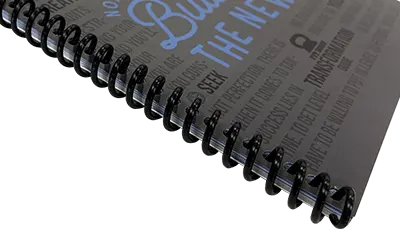
Coiled binding:
A great option for books that are functional in the workplace or educational contexts. Durable, super-flexible, and with 360°page rotation. These books can be laid flat, flipped, and can also have section tabs to make navigating the content easier.
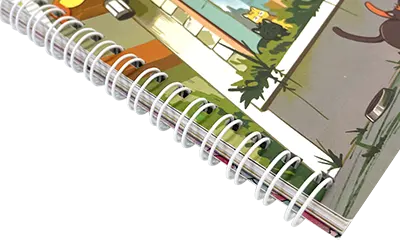
Wire-o binding:
Similar to coil binding, this is a popular choice for cookbooks, music books and business reports or portfolios.
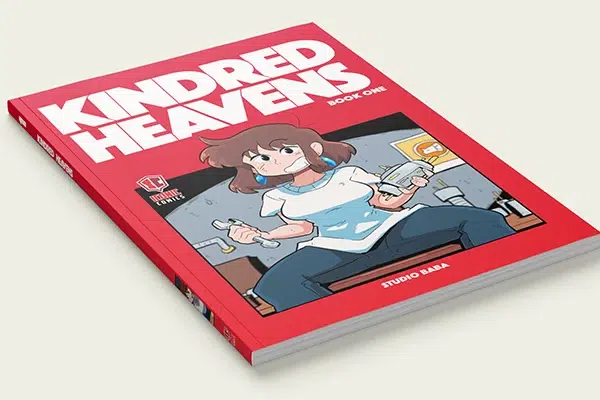
Perfect Binding:
Perfect binding gives any book a slick, professional look and keeps the pages very secure.
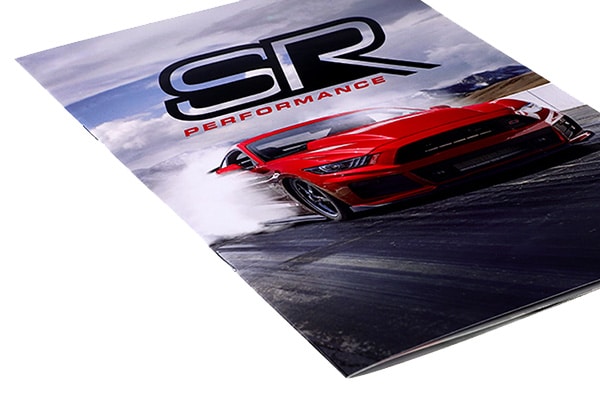
Saddle Stitch Binding:
This is a smart option for books with fewer pages. It’s a popular choice for textbooks, brochures, and instructional manuals.
The cost of printing a book for self-publishing
So, as you can see, there are many options open to the self-publisher when it comes to printing paperback or hardback copies of your book. You’ll appreciate by now that it’s impossible to give a single figure as there are so many variables. But you’re looking at anything from paying a POD service a percentage of your sales per book to a few hundred to a few thousand dollars for your print run, shipping and storage with a custom printer. But remember that while the POD option seems less expensive on the surface, it is almost always cheaper overall to go with a traditional printer.
Distribution, marketing, and sales of a self-published book
So, you’ve written, designed, and printed your book. It’s time to finally publish it, which means getting it out of storage and into the hands of readers by selling it through online and offline sales channels. The self-published author has a range of options available here, too.
- Direct selling to the public — there are several ways you can do this: set up school, university, and library visits to talk to students about creative writing or the issues raised in your book. Make sure that you have a fully developed presentation package on offer. So, include a mix of elements, not just a talk. Think about a slide presentation, a workshop, and a question-and-answer session. Or you can book a stand at any number of conventions, fan meets, conferences, and other events. If you have a lively blog that attracts a lot of traffic, you can also sell your book directly from your site.
- Amazon partnership and fulfilment — you don’t need to publish with KDP to make use of the world’s largest online marketplace. Sign up as a partner (not to be confused with an affiliate) and you can get your books shipped to an Amazon warehouse, log them into the store, and Amazon will manage payment and delivery for you. Obviously, there are fees attached to this service — Amazon is probably the diametric opposite of a charitable organization, after all! — but it’s an option well worth your consideration.
- Traditional bookstores and libraries — too many self-publishers dismiss this option as out of their league, but they’re wrong to do so. It’s no big deal to get your book into the catalogs the store buyers use to select their stock. Sign up with Nielsen and get your book listed with Ingram, the largest mainstream distributor in the US, or Gardner in the UK. Other territories will have their equivalents. You can also take your books in person to independent bookstores who will likely carry a few copies on a ‘sale or return’ basis. If you charm them, they may also set up a talk and book signing with you.
Whichever way you chose to print and publish your book, if you’re not from a marketing background, you’ll find there’s a lot to learn about making sales and building a following. But the details of that are beyond the scope of this article. A lot of marketing, you can do yourself through your own website, social media, and in person. You might also pay a third-party marketing and promotion agency to handle everything on your behalf. Most self-published authors settle for a mix of self-promotion and paid promotion. Only time and experience will show which is the best mix for you.
Other costs you may need to factor in to your self-publishing budget could include buying ISBN numbers and barcodes, software, courses and coaching to learn new skills, hiring an illustrator or photographer, and web development. And coffee. You’ll need a lot of coffee!
The bottom line: how much does it cost to self-publish a book?
We must make a disclaimer here, and we’re sure you’ll understand why. ‘Self-publishing a book’ can mean so many different things and each project is as individual as each author and their objectives. So, the following numbers are ballpark figures and all on a range. There really is no ‘one-size-fits-all’ answer to the question. But you should expect to invest an absolute minimum of $1,000 to $5,000 if you choose the most economical options, up to, say, $30,000+ if the only thing you do yourself is write the book.
Of course, once you’ve published your first book, subsequent books cost less as all the core marketing infrastructure will be in place and you’ll have climbed the learning curve. But self-publishing isn’t free. So, you’ll need to do a lot of head-scratching and calculating to work out your budget.
FAQs
1. Can I successfully self-publish my book without professional editing?
2. Why choose offset printing over print-on-demand (POD)?
3. How long does the self-publishing process typically take?
4. Are there hidden costs in self-publishing I should watch out for?
5. How many copies of my book should I print initially?
6. Should I create both print and digital versions of my book?
Yes, offering multiple formats can significantly boost sales, readership reach, and professional credibility.
7. Can I realistically manage book marketing myself?
Talk to us. We can help!
As we said at the outset, we’re not a publishing house, we’re a high-quality, competitively priced, custom printing service. But we know the industry end-to-end. You could do a lot worse than get in touch with us today. We’ll be happy to talk through your ideas with you to help you make the best choices for your project. And, of course, we’d be delighted to give you a no-obligation quote for printing, storing, packing, and delivering your book. Talk is free — call us today! Shoot us an email at [email protected] or call us at +1 951 866 3971, and we’ll be delighted to discuss your needs.




